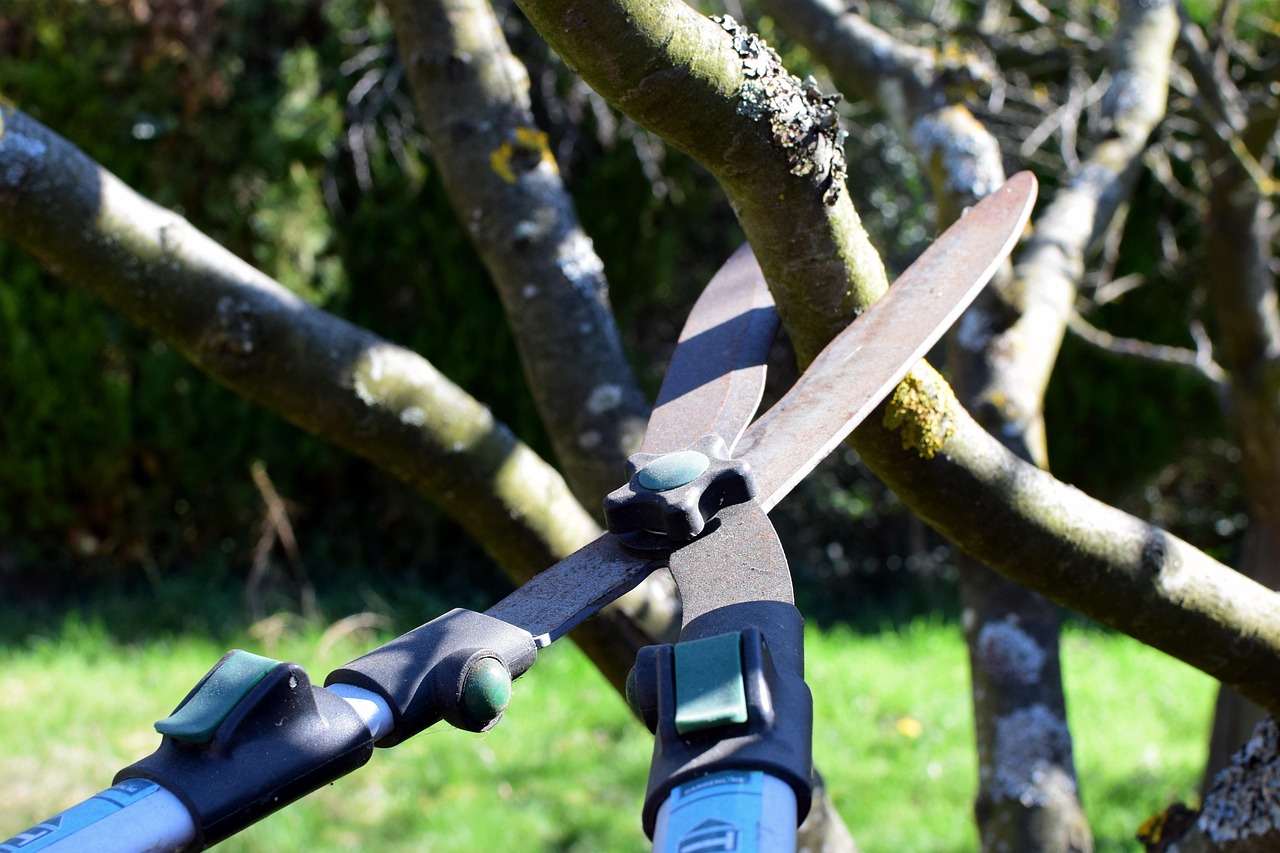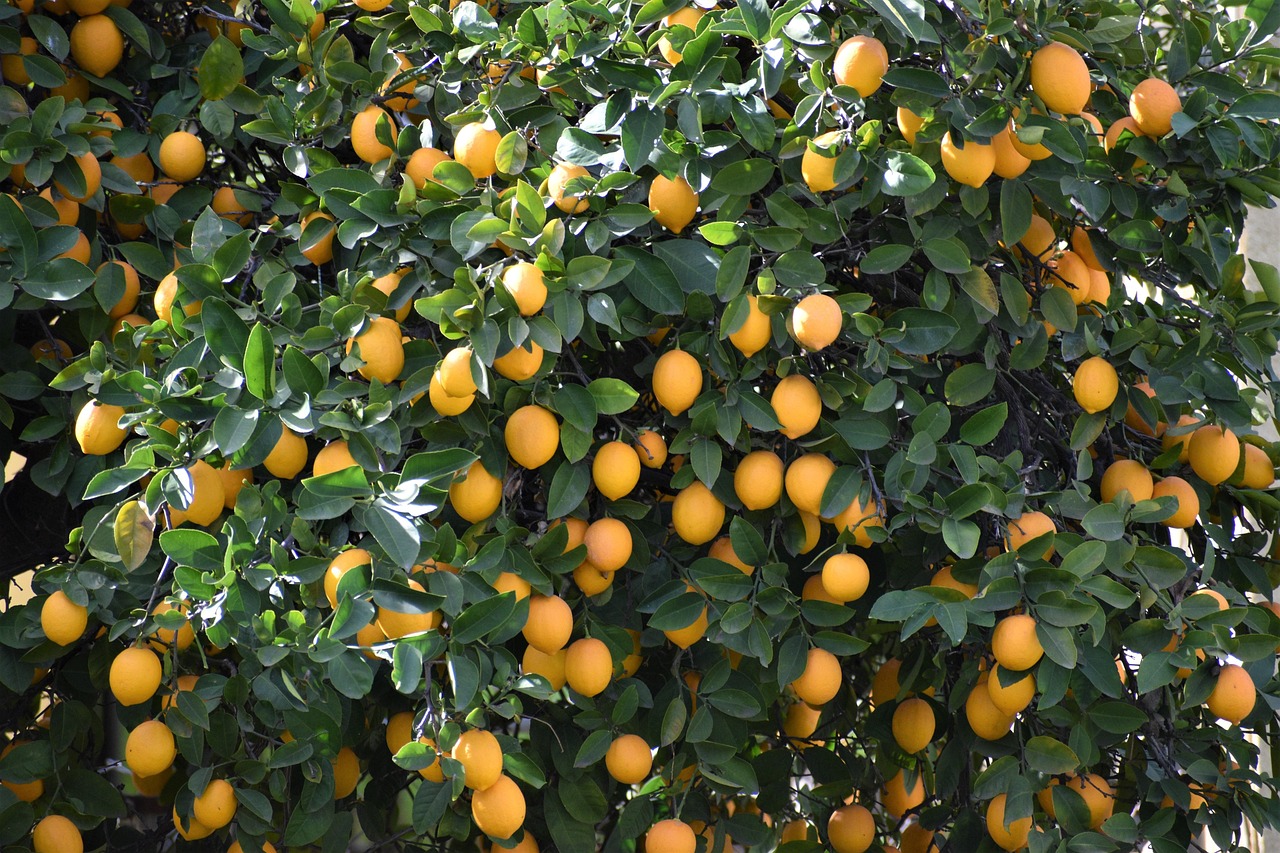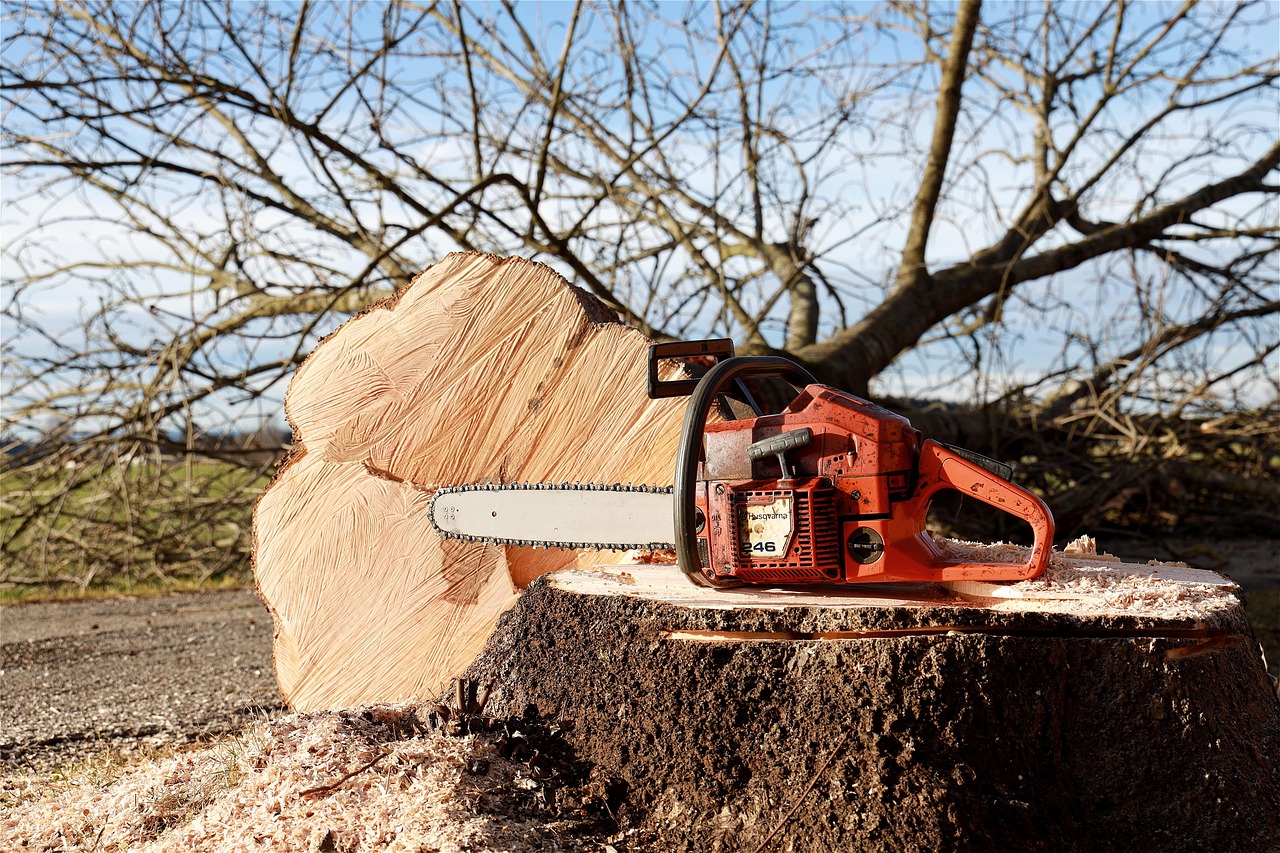Lemon tree pruning is essential for promoting healthy growth and enhancing flowering. Proper techniques help remove dead or overcrowded branches, allowing more light and air to reach the tree. This encourages stronger blooms and improves fruit production.
Lemon trees are beloved for their fragrant blossoms and juicy fruit. However, to maintain their health and productivity, regular pruning is necessary. Pruning not only shapes the tree but also enhances its ability to produce flowers. A well-pruned lemon tree can yield a bountiful harvest, making it an essential practice for gardeners.

Understanding the best times and methods for pruning can significantly impact your lemon tree’s flowering potential. Typically, lemon trees should be pruned in early spring, just before they bloom. This timing allows the tree to focus its energy on new growth and flower production. However, light pruning can also be done throughout the year to remove any dead or damaged branches.
Benefits of Pruning Lemon Trees
Pruning offers numerous benefits, which include:
- Encouraging New Growth: Removing older, unproductive branches stimulates the growth of new shoots.
- Improving Air Circulation: Thinning the canopy allows air to flow freely, reducing the risk of disease.
- Enhancing Sunlight Exposure: More sunlight reaches the inner branches, promoting healthier foliage and flowers.
- Shaping the Tree: Proper pruning helps maintain a desirable shape, making it easier to manage and harvest.
Additionally, pruning can help control the size of the tree. This is particularly important for container-grown lemon trees, which may need to be kept smaller for practical reasons. By managing their size through pruning, gardeners can ensure that the tree remains healthy and productive.

When to Prune Lemon Trees
Timing is crucial when it comes to pruning lemon trees. The best time to prune is during the late winter or early spring. This is when the tree is still dormant but ready to start its growing season. Pruning at this time allows you to:
- Remove any dead or damaged wood.
- Encourage new growth just in time for blooming.
- Shape the tree before it begins to leaf out.
In some regions with mild winters, light pruning can also be done in late summer. However, heavy pruning should be avoided during this time as it may stress the tree and reduce flower production. Always monitor your tree’s health and adjust your pruning schedule accordingly.
Essential Pruning Techniques
Applying the right techniques is key for effective pruning. Here are some essential techniques to consider:

- Sanitize Your Tools: Before starting, make sure your pruning shears are clean to prevent disease transmission.
- Cut at the Right Angle: Make cuts at a 45-degree angle to ensure water runoff and reduce rot.
- Avoid Over-Pruning: Remove no more than one-third of the tree’s total foliage at any one time.
- Remove Suckers: Cut away any suckers growing from the base or along the trunk, as they divert energy from the main branches.
Each of these techniques plays a critical role in ensuring that your lemon tree can thrive and produce an abundance of flowers and fruit.
Common Mistakes in Pruning
While pruning is beneficial, there are common mistakes that gardeners should avoid:
- Pruning Too Late: Waiting until after blooming can hinder flower production.
- Ignoring Tree Shape: Not considering the natural shape of the tree can lead to an unbalanced appearance.
- Using Dull Tools: Dull tools can tear branches instead of making clean cuts, increasing the risk of disease.
Avoiding these pitfalls will help ensure that your lemon tree remains healthy and productive throughout its growing season.

Pest and Disease Management
After pruning, it’s essential to monitor your lemon tree for pests and diseases. Common issues include aphids, spider mites, and fungal infections. Keeping an eye on your tree’s health will allow you to take action quickly if any problems arise. Regularly checking your tree, especially after pruning, will help catch any issues early on.
This proactive approach can further enhance your lemon tree’s ability to flower and produce fruit effectively.
Tools Needed for Pruning
Having the right tools is crucial for effective pruning. Using proper equipment can make the task easier and more efficient. Here are some essential tools you should consider:
- Pruning Shears: Sharp, clean pruning shears are essential for making precise cuts on small branches and stems.
- Loppers: These are used for cutting thicker branches that are too large for pruning shears.
- Hand Saw: A hand saw is useful for larger branches that require more power to cut through.
- Gardening Gloves: Protect your hands while working with branches and thorns.
- Disinfectant: Use a disinfectant solution to clean your tools before and after pruning to prevent disease spread.
Using the right tools not only makes the process smoother but also ensures that you make clean cuts, which is vital for the health of the lemon tree. Dull or improper tools can damage the branches, leading to increased vulnerability to pests and diseases.
Pruning Techniques for Different Growth Stages
Lemon trees can be pruned in various ways depending on their growth stage. Each stage has specific pruning techniques that enhance flowering and overall health. Here are some techniques based on growth stages:
Young Trees
For young lemon trees, pruning focuses on establishing a strong framework. The objective is to shape the tree and encourage healthy growth:
- Top Pruning: Cut back the top of the tree to promote lateral growth and prevent it from becoming leggy.
- Removing Competing Leaders: If multiple stems grow vertically, select one to be the main trunk and remove the others.
- Thinning Out: Remove any weak or inward-growing branches to improve air circulation and light exposure.
Mature Trees
Mature lemon trees require different pruning techniques to maintain their health and productivity:
- Renewal Pruning: Remove older branches that have stopped producing fruit. This encourages new growth.
- Selective Thinning: Thin out crowded branches to allow sunlight to penetrate the canopy.
- Pest Management Cuts: Remove any branches showing signs of pest infestation or disease.
Seasonal Care Following Pruning
After you have pruned your lemon tree, seasonal care becomes crucial in supporting its recovery and encouraging flowering. Here are some important steps to follow:
- Watering: Ensure that the tree receives adequate water, especially following pruning. This helps reduce stress and promotes recovery.
- Fertilization: Apply a balanced fertilizer about a month after pruning. This supports new growth and flower production.
- Pest Monitoring: Keep an eye out for pests in the weeks following pruning, as this is when trees can be most vulnerable.
- Mulching: Add mulch around the base of the tree to retain soil moisture and regulate temperature.
Following these steps helps your lemon tree recover from pruning while ensuring it remains healthy and productive throughout its growing season.
The Role of Soil Health in Flowering
The health of your soil plays a significant role in your lemon tree’s ability to flower and produce fruit. Healthy soil provides essential nutrients and supports robust root systems. Here are some aspects to consider regarding soil health:
- Nutrient Balance: Ensure that your soil has the right balance of nitrogen, phosphorus, and potassium, which are vital for flower development.
- Soil pH: Lemon trees thrive in slightly acidic soil with a pH between 5.5 and 6.5. Regularly test your soil pH and amend as needed.
- Organic Matter: Incorporate organic matter such as compost to improve soil structure and nutrient availability.
A well-maintained soil environment not only supports healthy growth but also enhances the tree’s ability to flower abundantly. Regular soil testing and amendments will ensure that your lemon tree has everything it needs to thrive.
Caring for Lemon Trees During Flowering
Caring for your lemon tree during its flowering stage is critical for ensuring successful fruit set. Here are several tips for maintaining optimal conditions during this time:
- Adequate Watering: Provide consistent moisture without waterlogging. This is crucial for flower development.
- Sunlight Exposure: Ensure that your tree receives plenty of sunlight throughout the day, as this encourages flowering.
- Pest Control: Monitor for pests that may target flowers or new growth and take action promptly if needed.
Caring for your lemon tree during this crucial stage will help ensure that it produces a plentiful harvest come fruiting season.
Understanding Lemon Tree Varieties
Different varieties of lemon trees can have varying needs when it comes to pruning and flowering. Recognizing these differences can help you tailor your care practices effectively. Here are some popular lemon tree varieties:
| Variety | Description | Flowering Characteristics |
|---|---|---|
| Eureka | One of the most common varieties, known for its bright yellow fruit and thorny branches. | Produces flowers year-round, with peak blooms in spring. |
| Lisbon | A hardy variety that tolerates different climates and produces large lemons. | Blooms primarily in spring and summer. |
| Meyer | A hybrid between a lemon and a mandarin, known for its sweeter flavor. | Blooms multiple times a year, particularly in spring and fall. |
| Ponderosa | This variety produces very large lemons and has a vigorous growth habit. | Flowers mainly in spring, with occasional blooms in summer. |
Understanding the characteristics of each variety can help you know when to prune and how to care for them to maximize flowering potential.
Common Flowering Issues and Solutions
Even with proper care, lemon trees can face challenges that impact flowering. Identifying these issues early can help you take corrective action. Here are common problems and their solutions:
Insufficient Light
Lemon trees require full sun for optimal flowering. If your tree is not getting enough light, it may not produce flowers effectively. Here’s how to address this:
- Relocate the Tree: If the tree is in a pot, consider moving it to a sunnier location.
- Trim Neighboring Plants: Remove any overgrown plants that may be shading your lemon tree.
Pest Infestation
Pests such as aphids and scale can affect flowering by weakening the tree. Here are steps to manage pests:
- Regular Inspection: Frequently check your tree for signs of pests.
- Natural Predators: Encourage beneficial insects like ladybugs that feed on aphids.
- Pesticide Application: As a last resort, use organic pesticides to manage severe infestations.
Nutrient Deficiency
A lack of essential nutrients can lead to poor flowering. Monitor your lemon tree’s nutrient levels and consider the following:
- Soil Testing: Conduct a soil test to identify deficiencies.
- Fertilization Schedule: Follow a regular fertilization schedule with a balanced fertilizer high in phosphorus to promote flowering.
The Importance of Pruning Timing
The timing of your pruning efforts can significantly influence flowering. Understanding the best practices for pruning at various times of the year can enhance your results:
Pre-Bloom Pruning
Pruning just before the flowering season allows the tree to channel its energy into new growth and flower production. Consider these tips:
- Timing: Aim to prune in late winter or early spring, just before new growth begins.
- Focus Areas: Target dead or overcrowded branches first to open up the canopy for new blooms.
Post-Bloom Pruning
After the flowering period, light pruning can be beneficial for maintaining shape and health:
- Remove Spent Flowers: Deadhead spent blooms to encourage further growth.
- Assess Growth: Evaluate which branches have produced fruit and which have not; consider removing those that are unproductive.
Encouraging Pollination for Better Flowering
Proper pollination is essential for successful fruit set after flowering. Here are ways to encourage pollination:
- Attract Pollinators: Plant flowers nearby that attract bees and other pollinating insects.
- Avoid Pesticides: Minimize pesticide use during blooming to protect beneficial insects.
- Hand Pollination: In areas with few natural pollinators, consider hand-pollinating flowers using a small brush or cotton swab.
By fostering an environment conducive to pollinators, you can improve the chances of successful fruit set following flowering.
Cultural Practices That Support Flowering
Caring for your lemon tree through various cultural practices will also enhance its ability to flower. Here are some important practices to consider:
- Irrigation Practices: Use drip irrigation to provide consistent moisture without oversaturating the soil.
- Mulching: Apply organic mulch around the base of the tree to retain moisture and regulate soil temperature.
- Crowd Control: If planting multiple trees, ensure adequate spacing to allow for air circulation and light exposure.
Implementing these cultural practices will create an optimal growing environment for your lemon tree, promoting healthy flowering and fruit production.
In addition to the practices mentioned, maintaining overall tree health is crucial for enhancing flowering. Regularly inspect your lemon tree for signs of stress or disease, as healthy trees are better able to produce flowers and fruit. Recognizing early symptoms can lead to quicker responses, minimizing potential damage.
Understanding the Growth Cycle of Lemon Trees
To effectively prune and care for lemon trees, it is essential to understand their growth cycle. Lemon trees generally follow a distinct seasonal pattern:
- Spring: This is the primary growth and flowering period. Trees will typically bloom and start producing new leaves.
- Summer: After the initial flowering, fruit begins to set. Proper care during this time is crucial for fruit development.
- Fall: This is a time for harvesting ripe lemons. Some trees may have secondary blooms during this season.
- Winter: Trees enter a dormant phase. Minimal pruning and care are needed, focusing mainly on protection from frost.
Understanding this cycle allows you to plan your pruning and care throughout the year, ensuring that your lemon tree remains healthy and productive.
Using Organic Practices for Healthy Growth
Many gardeners prefer organic methods for caring for their lemon trees. Using organic fertilizers and pest control measures can promote healthier growth while also being environmentally friendly. Here are some organic practices to consider:
- Compost: Incorporate compost into the soil to provide natural nutrients and improve soil structure.
- Neem Oil: Use neem oil as a natural pesticide to combat pests without harming beneficial insects.
- Organic Fertilizers: Choose organic fertilizers that are specifically formulated for citrus trees to ensure balanced nutrition.
Implementing these organic practices not only benefits your lemon tree but also contributes to a healthier ecosystem in your garden.
Monitoring Environmental Factors
Environmental factors significantly influence the growth and flowering of lemon trees. Here are key factors to monitor:
- Temperature: Lemon trees thrive in temperatures between 70°F and 85°F (21°C to 29°C). Protect them from extreme cold or heat.
- Humidity: These trees prefer moderate humidity levels. If your area is too dry, consider misting the leaves or using a humidifier nearby.
- Wind Protection: Strong winds can damage flowers and fruit. Plant windbreaks or provide support to shield your tree.
By keeping an eye on these factors, you can create a more favorable environment for your lemon tree, ultimately enhancing its flowering potential.
Final Thoughts
Caring for lemon trees through proper pruning, seasonal maintenance, and cultural practices is essential for encouraging abundant flowering and fruit production. Understanding the specific needs of different lemon varieties, monitoring environmental factors, and employing organic practices can all contribute to a healthier tree and a more fruitful harvest.
Your commitment to following these guidelines will not only enhance the beauty of your lemon tree but also ensure that it remains a productive part of your garden for years to come. With patience and attention, you will enjoy the delightful fragrance of lemon blossoms and the satisfaction of harvesting fresh lemons from your very own tree.
By adopting these comprehensive care strategies, you can create a thriving environment conducive to flowering and fruiting, making your gardening experience both rewarding and fruitful.
